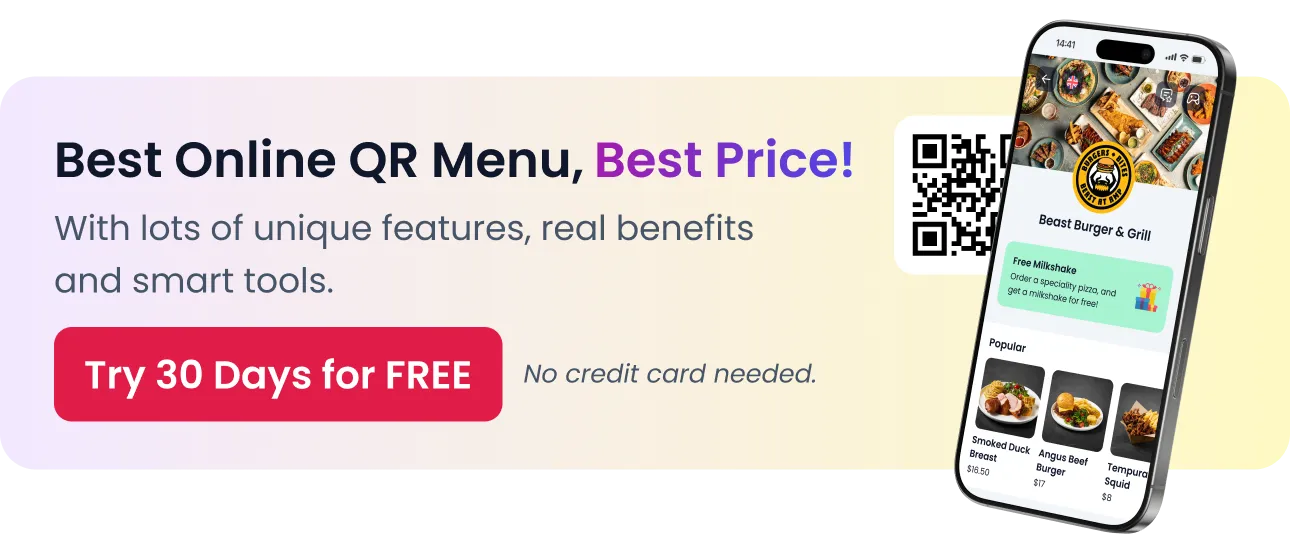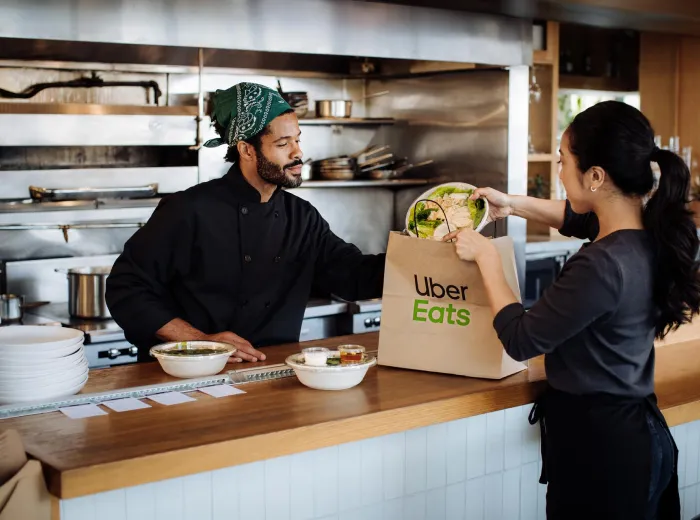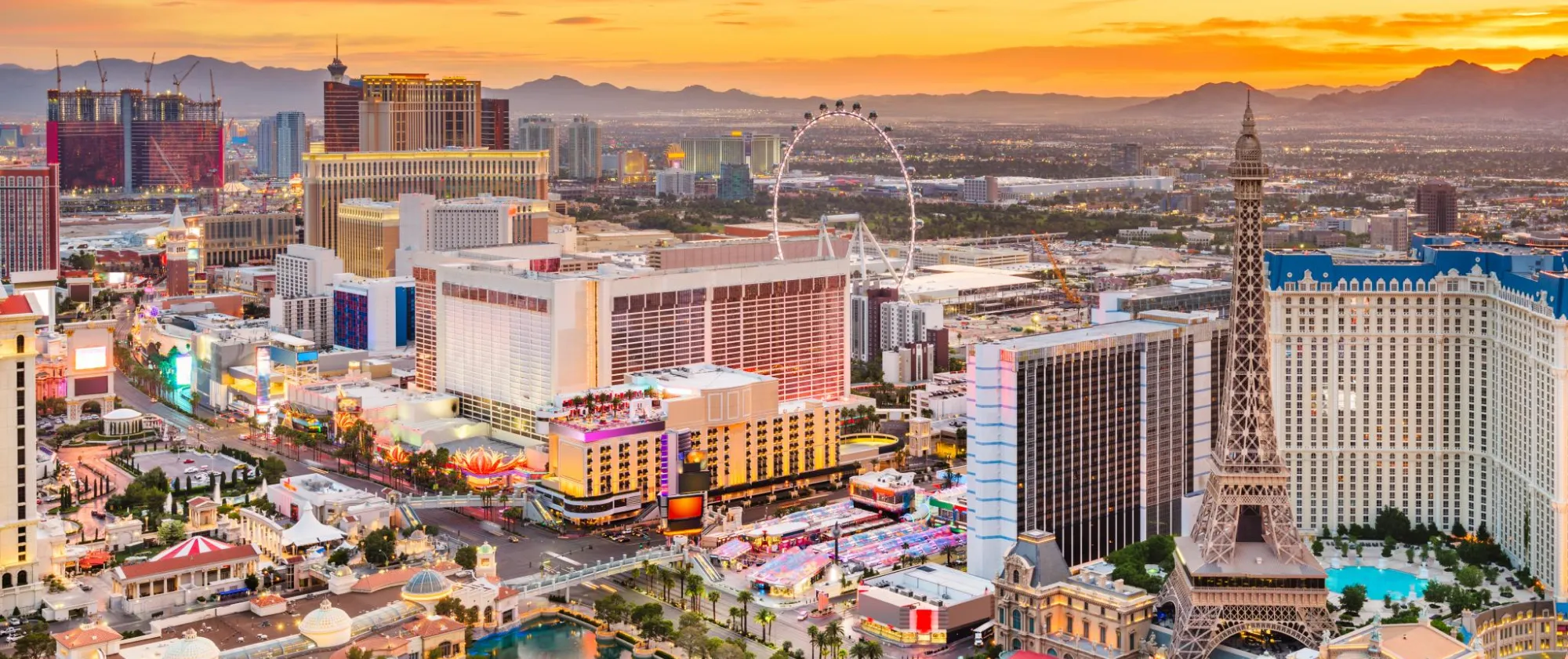
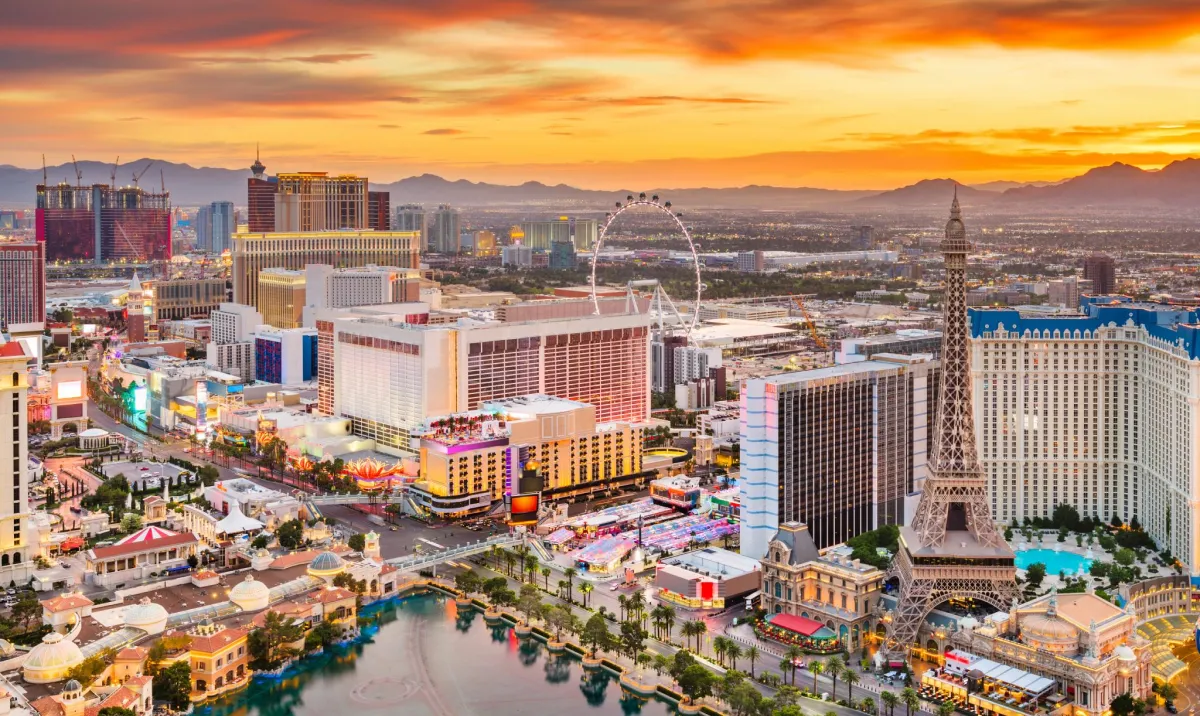
Best Restaurant Concepts to Open in Nevada | Comprehensive Guide
Nevada is one of the best states in the U.S. to open a restaurant, thanks to its booming tourism industry, business-friendly tax policies, and diverse customer base. From the bright lights of Las Vegas to the rapidly growing food scene in Reno, restaurant owners have plenty of opportunities to tap into a high-demand market. Whether you’re catering to tourists looking for an unforgettable dining experience or locals craving unique flavors, Nevada offers the perfect landscape for innovative restaurant concepts.
However, opening a restaurant in Nevada requires more than just a great idea. You need to choose the right concept, secure the necessary permits, and craft a strong marketing strategy to stand out in a competitive industry. Factors like location, target audience, and operational costs all play a critical role in determining your restaurant’s success.
In this guide, we’ll explore the best restaurant concepts to open in Nevada, covering everything from fine dining and themed restaurants to fast-casual and health-focused eateries. We’ll also discuss key considerations such as market research, budgeting, marketing, and compliance with Nevada’s food and liquor laws. If you’re ready to turn your restaurant dream into reality, let’s dive in!
Why Nevada is a Great Place to Open a Restaurant
Nevada is a prime location for opening a restaurant, thanks to its thriving hospitality industry, business-friendly regulations, and year-round influx of tourists. Whether you plan to open a fine dining establishment on the Las Vegas Strip or a cozy café in Reno, the state’s economic climate and diverse consumer base provide countless opportunities for restaurateurs. Below are key reasons why Nevada stands out as an ideal place to launch a restaurant.
Growing Tourism and Hospitality Industry
Nevada is home to some of the most visited destinations in the world, with millions of tourists arriving every year. The state’s reliance on the hospitality industry makes restaurants an essential part of the economy.
- Las Vegas alone attracts over 40 million visitors annually. Many tourists are eager to experience world-class dining, from celebrity chef restaurants to 24-hour eateries.
- Reno and Lake Tahoe have strong year-round tourism. These areas draw visitors for both winter sports and summer recreation, keeping restaurants busy in all seasons.
- Conventions, trade shows, and events fuel restaurant demand. The Las Vegas Convention Center hosts massive events that bring in business travelers looking for upscale dining options.
For restaurant owners, Nevada’s tourism-driven economy means a steady flow of customers who are willing to spend on unique and high-quality dining experiences.
Business-Friendly Tax Policies and Incentives
Nevada’s tax environment is one of the most business-friendly in the country, making it easier for restaurants to operate profitably.
- No state income tax: Restaurant owners do not have to pay personal income tax on business earnings, allowing for greater profit retention.
- Low corporate taxes: Businesses benefit from lower tax burdens compared to neighboring states like California.
- Incentives for new businesses: Nevada offers grants, tax abatements, and other incentives to encourage entrepreneurship, particularly in the food and hospitality industry.
With fewer tax obligations and government incentives, restaurant owners in Nevada can reinvest more of their earnings into growth and innovation.
Diverse and Evolving Culinary Scene
Nevada’s food scene is constantly evolving, with new trends emerging in response to the state’s diverse population and international visitors.
- Cultural diversity fuels food innovation. With residents and visitors from around the world, Nevada has a demand for a wide range of cuisines, from authentic Asian street food to high-end European dining.
- Celebrity chefs and food influencers boost Nevada’s reputation. Many top chefs choose to open flagship restaurants in Las Vegas, setting trends for the entire restaurant industry.
- Local food movements are gaining popularity. Farm-to-table concepts, sustainable seafood, and organic dining experiences are becoming more common in urban areas.
By tapping into these evolving food trends, restaurateurs in Nevada can attract both locals and tourists looking for fresh and exciting dining experiences.
High Foot Traffic in Major Cities Like Las Vegas and Reno
Nevada’s urban centers provide prime locations for restaurants, with heavy foot traffic from both residents and visitors.
- Las Vegas Strip: One of the busiest tourist destinations in the world, filled with high-end dining, casual eateries, and late-night food spots.
- Downtown Reno: A fast-growing food scene with a mix of classic diners, modern cafés, and innovative fusion restaurants.
- Local neighborhoods: Areas like Summerlin and Henderson in Las Vegas offer thriving suburban dining markets with strong local customer bases.
Choosing a location with strong foot traffic can help a restaurant thrive by ensuring a steady stream of customers throughout the day.
Nevada’s combination of tourism, tax advantages, and a dynamic food scene makes it one of the best states to launch a restaurant. Whether you’re targeting high-end tourists, local diners, or a niche food market, the opportunities in Nevada are vast and lucrative.
Factors to Consider When Choosing a Restaurant Concept
Choosing the right restaurant concept is one of the most critical decisions you’ll make as an entrepreneur. In Nevada, factors like target audience, location, competition, and legal requirements play a crucial role in determining your success. Before finalizing your concept, consider the following key factors.
Understanding Your Target Audience in Nevada
Your restaurant’s concept should align with the preferences and expectations of your target customers.
- Tourists vs. locals: Are you catering to out-of-town visitors looking for a high-end experience, or are you targeting Nevada residents who want quality food at affordable prices?
- Demographics: Consider the age, income level, and dining habits of your potential customers. Upscale dining may work well in high-income areas, while fast-casual spots may be better suited for younger crowds.
- Dining trends: Identify what’s trending in Nevada’s food scene. For example, plant-based restaurants, late-night eateries, and experiential dining are growing in popularity.
A well-defined target audience helps in menu planning, pricing, and marketing, ensuring that your restaurant attracts the right customers.
Location Matters: Urban vs. Suburban Areas
The location of your restaurant significantly impacts its success. Nevada offers various options, from bustling tourist hubs to quieter suburban neighborhoods.
- Las Vegas Strip & downtown areas: Best for high-end dining, themed restaurants, and nightlife-driven concepts. These areas come with high rent but offer massive exposure and tourist traffic.
- Suburban areas like Henderson & Summerlin: Great for family-friendly restaurants, fast-casual spots, and delivery-focused eateries. Lower rent and a strong local customer base make these areas attractive for long-term businesses.
- Reno & Lake Tahoe: Ideal for food concepts that appeal to outdoor enthusiasts, skiers, and year-round tourists. Farm-to-table and organic restaurants perform well in these markets.
Choosing the right location ensures that your restaurant is positioned where demand is highest for your chosen concept.
Competition Analysis: Standing Out in a Crowded Market
Understanding your competition is essential to carving out a unique place in Nevada’s restaurant industry.
- Identify direct competitors: Research restaurants with similar concepts in your chosen area. Analyze their menus, pricing, and customer reviews.
- Look for market gaps: Are there underserved food categories in your target location? Unique cuisines, dietary-friendly options, or experiential dining concepts may have less competition.
- Differentiate your brand: Develop a unique selling proposition (USP). This could be a signature dish, an interactive dining experience, or an innovative ordering process.
Standing out in a competitive market requires thorough research and strategic planning to offer something fresh and appealing.
Licensing, Permits, and Compliance in Nevada
Operating a restaurant in Nevada requires several legal approvals, and compliance with state and local regulations is mandatory.
- Business registration: You’ll need to register your restaurant with the Nevada Secretary of State and obtain an Employer Identification Number (EIN).
- Food service permits: Health department permits, food handling certifications, and inspection approvals are necessary before opening.
- Liquor license: If you plan to serve alcohol, obtaining the right liquor license is a must. The process varies depending on your location and type of establishment.
- Zoning laws & building permits: Ensure your restaurant location complies with zoning regulations and has the necessary permits for remodeling or signage.
Understanding the legal requirements upfront prevents costly delays and ensures a smooth restaurant launch.
By carefully evaluating these factors—target audience, location, competition, and compliance—you can select a restaurant concept that aligns with Nevada’s dynamic market. A well-planned concept will not only attract the right customers but also position your restaurant for long-term success.
Top Restaurant Concepts for Nevada
Nevada’s vibrant food scene and tourism-driven economy offer immense opportunities for restaurant owners. Whether you’re targeting high-end tourists in Las Vegas, families in Reno, or locals looking for unique dining experiences, the right concept can set your business apart. Below are some of the most profitable and trending restaurant concepts to consider in Nevada.
High-Profit & Trending Concepts
These concepts cater to premium markets and have high earning potential due to Nevada’s tourism and hospitality industry.
Fine Dining with a Unique Twist
Nevada’s fine dining industry is booming, especially in Las Vegas, where world-class chefs and luxury dining experiences attract high-spending customers.
- Celebrity chef-driven restaurants – Establishments led by famous chefs gain instant credibility and attract food enthusiasts.
- High-end steakhouse experiences – Upscale steakhouses with dry-aged beef and tableside service are popular among business professionals and tourists.
- Fusion fine dining – Unique pairings like Japanese-Peruvian (Nikkei cuisine) or French-Asian blends provide a fresh take on luxury dining.
Fine dining in Nevada thrives on exclusivity, ambiance, and high-quality ingredients, making it a lucrative but competitive space.
Fast-Casual Restaurants
Fast-casual dining is growing in popularity, offering high-quality food with quicker service than full-service restaurants.
- Gourmet burger joints – Fresh, locally sourced ingredients and customizable options make for a strong selling point.
- Build-your-own poke bowls – Hawaiian-inspired poke bowls cater to health-conscious customers looking for fresh, customizable meals.
- Customizable pasta bars – Diners can choose their pasta, sauce, and toppings, creating a personalized experience.
Fast-casual restaurants perform well in suburban areas, shopping centers, and near college campuses.
Themed Restaurants
Themed restaurants provide immersive dining experiences that appeal to both locals and tourists looking for something beyond a traditional meal.
- Vintage Vegas-style diners – Nostalgic décor and classic American comfort food attract customers looking for a retro experience.
- Speakeasy bars with secret entrances – Hidden, prohibition-era-style bars add mystery and exclusivity to a night out.
- Sci-fi, retro, or pop-culture-themed restaurants – Dining experiences inspired by movies, video games, or historical eras create strong brand identities.
Themed restaurants in Nevada often go viral on social media, drawing in crowds curious about the unique ambiance.
Food Halls & Multi-Vendor Spaces
Food halls offer multiple food vendors in a shared space, creating a diverse and dynamic dining environment.
- Collaborative food market models – Several small businesses share a large space, offering variety to customers.
- Small-scale, high-quality chef-driven kiosks – Up-and-coming chefs can test new dishes with lower overhead costs.
- Rotating vendor concepts – Keeping menus fresh by featuring different vendors each month boosts repeat visits.
Food halls work well in busy city centers, attracting both tourists and locals seeking diverse meal options.
Popular Local & Tourist-Focused Concepts
Restaurants catering to Nevada’s tourist-heavy market can generate high revenues with the right strategy.
All-You-Can-Eat Buffets
Nevada, especially Las Vegas, is famous for its buffets, offering a variety of cuisines to cater to diverse palates.
- Luxury seafood and prime rib buffets – High-end buffets with premium options attract VIP guests.
- International cuisine buffets – Asian, Mediterranean, Brazilian, and fusion buffets appeal to global tourists.
Buffets in Nevada succeed when they offer quality food, strong branding, and competitive pricing.
High-Energy Bars & Lounges
Bars and lounges are a staple of Nevada’s nightlife, especially in Las Vegas and Reno.
- Rooftop bars with scenic views – Great for upscale cocktails and social media-friendly aesthetics.
- Craft cocktail and mixology-driven concepts – Unique, handcrafted drinks differentiate premium bars.
- Live music and entertainment venues – Pairing food and drinks with entertainment creates a complete nightlife experience.
High-energy bars work best in high-traffic locations with strong branding and curated experiences.
Late-Night & 24-Hour Eateries
Nevada’s round-the-clock lifestyle creates demand for restaurants that operate late or all night.
- Upscale diners with gourmet comfort food – Higher-quality ingredients elevate traditional diner fare.
- Breakfast-all-day cafés – Catering to night-shift workers, travelers, and late-night cravings.
- Post-club fast-food concepts – Quick-service spots offering greasy, satisfying food for late-night partygoers.
Late-night restaurants succeed near casinos, hotels, and entertainment districts.
Sustainable & Health-Focused Concepts
As consumer preferences shift toward healthier and eco-friendly dining, sustainable restaurant concepts are gaining traction.
Plant-Based & Vegan Restaurants
Plant-based dining is on the rise, especially in urban areas with health-conscious consumers.
- Organic, farm-to-table vegan dining – Locally sourced ingredients appeal to ethical eaters.
- Vegan fast food – Plant-based burgers, tacos, and comfort foods make vegan dining more accessible.
- Juice bars and smoothie cafés – Fresh juices and smoothies with superfoods cater to health-focused customers.
Vegan and plant-based restaurants thrive in wellness-conscious communities and trendy food districts.
Wellness & Functional Food Cafés
Functional foods that promote health benefits are becoming a major trend in Nevada.
- Keto, paleo, and gluten-free friendly menus – Catering to customers with specific dietary needs.
- Superfood bowls and adaptogenic beverages – Offering nutrient-dense meals and drinks that enhance well-being.
- Fermented food concepts like kombucha bars – Tap into the growing interest in gut health and probiotics.
Wellness-driven restaurants work well near gyms, yoga studios, and health-conscious neighborhoods.
Nevada’s restaurant industry offers a wide range of opportunities, from high-end dining and nightlife spots to sustainable and health-focused eateries. Choosing the right concept based on location, target audience, and market trends will ensure long-term success in this competitive yet lucrative market.
How to Validate Your Restaurant Concept in Nevada
Before investing in a full-scale restaurant launch, it’s essential to validate your concept to ensure it meets market demand and aligns with local consumer preferences. Nevada’s restaurant industry is highly competitive, so conducting proper validation can help you refine your idea, minimize risks, and increase your chances of success. Below are key strategies to test and validate your restaurant concept before committing significant resources.
Conducting Market Research and Consumer Surveys
Understanding customer preferences and industry trends is crucial when validating your restaurant concept.
- Analyze Nevada’s food industry trends – Look at successful restaurants in Las Vegas, Reno, and other key markets to identify what’s working.
- Study customer demographics – Use census data and local reports to determine the target age group, spending habits, and dining preferences.
- Run online surveys and polls – Platforms like Google Forms and social media polls can help gather insights from potential customers.
- Engage with local food communities – Participate in food festivals, join Nevada restaurant owner groups, and interact with potential diners to understand their expectations.
The more data you collect, the better you can tailor your restaurant concept to meet local demand.
Testing Your Menu with Pop-Ups and Ghost Kitchens
Before committing to a permanent location, consider testing your menu through temporary and low-investment options.
- Pop-up events – Set up short-term dining experiences in popular locations to gauge interest in your food.
- Food truck experiments – A mobile setup allows you to test different areas and customer bases with minimal investment.
- Ghost kitchens – Launch a delivery-only restaurant to test menu items before investing in a brick-and-mortar location.
- Collaborations with local businesses – Partner with existing cafés or bars to serve your dishes for a limited time.
These strategies allow you to test your concept with real customers and refine your menu based on feedback.
Understanding Seasonality and Peak Business Times
Tourism and local events significantly impact restaurant demand in Nevada, so aligning your concept with peak seasons is critical.
- Las Vegas visitor trends – Major events like CES, music festivals, and sports tournaments create spikes in restaurant traffic.
- Reno and Lake Tahoe’s seasonal shifts – Ski resorts see peak business in winter, while summer attracts outdoor adventure seekers.
- Local holidays and conventions – Adjust your offerings based on when large crowds are expected.
- Weekday vs. weekend dining patterns – Casinos, nightlife, and entertainment districts experience late-night spikes, while suburban areas may have stronger weekend traffic.
By understanding when and where customer demand is highest, you can optimize your restaurant’s operating hours, menu, and marketing efforts.
Gauging Demand Through Social Media Engagement
Social media platforms provide an excellent way to measure interest in your restaurant concept before you launch.
- Create concept teasers – Share behind-the-scenes content, food photos, and potential menu ideas on Instagram, Facebook, and TikTok.
- Engage with local food influencers – Partner with Nevada-based bloggers and influencers to generate buzz.
- Test branding and messaging – See how audiences respond to your restaurant’s name, theme, and visual identity.
- Collect feedback on menu items – Use Instagram polls or Twitter threads to let potential customers vote on dishes.
A strong online presence before launch can indicate whether your concept has a built-in audience eager to try your food.
Validating your restaurant concept before launch helps reduce risks and ensures you’re offering something that customers in Nevada genuinely want. By conducting research, testing your menu, understanding seasonality, and leveraging social media, you can refine your concept for maximum success.
Funding & Budgeting for Your Nevada Restaurant
Opening a restaurant in Nevada requires careful financial planning to ensure long-term success. From securing initial funding to managing operational costs, having a well-structured budget is essential. Below, we explore different funding options, expected expenses, and cost-saving strategies to help you plan effectively.
Startup Costs and Funding Options
Before launching your restaurant, you need to determine the total startup costs and explore potential funding sources.
Estimated Startup Costs for a Nevada Restaurant:
The cost of opening a restaurant varies depending on factors like location, concept, and size. Below is a rough estimate:
Lease & security deposit — $5,000 – $50,000+
Renovations & interior design — $10,000 – $500,000+
Kitchen equipment & appliances — $15,000 – $200,000+
Permits & licenses — $2,000 – $20,000
Initial inventory — $5,000 – $50,000
Marketing & branding — $5,000 – $50,000
Technology (POS system, website, etc.) — $3,000 – $15,000
Hiring & staff training — $5,000 – $30,000
Working capital (for 3-6 months) — $20,000 – $100,000+
Total Estimated Cost = $70,000 – $1M+
Funding Options for Nevada Restaurants:
- Personal savings – Self-funding reduces reliance on debt but requires substantial personal capital.
- Small Business Loans (SBA Loans) – Nevada entrepreneurs can apply for SBA-backed loans through local banks.
- Investor funding – Angel investors or venture capital firms may invest in innovative restaurant concepts.
- Restaurant incubators & grants – Some local business development programs offer grants to new restaurant owners.
- Crowdfunding – Platforms like Kickstarter or GoFundMe can help raise capital by generating community support.
- Franchising opportunities – If you’re opening a franchise, corporate-backed funding may be available.
Choosing the right funding strategy ensures financial stability and minimizes the risks of running out of cash early on.
How Much Rent to Expect in Prime Locations
Rent is one of the most significant fixed expenses for any restaurant, and costs vary widely across Nevada.
Average Monthly Rent in Key Nevada Locations:
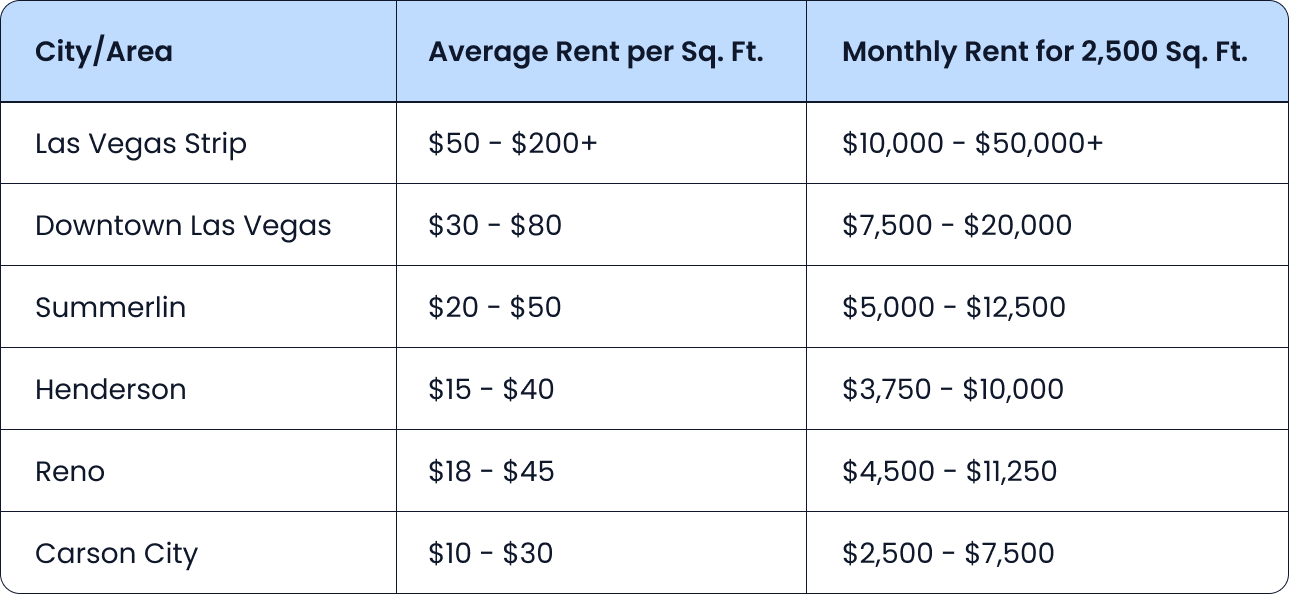
Tips for Managing Rental Costs:
- Negotiate lease terms – Landlords may offer rent-free months or lower rates for long-term agreements.
- Consider revenue-sharing leases – Some landlords charge lower base rent in exchange for a percentage of sales.
- Choose an off-strip location – If targeting locals, opting for a lower-rent suburban area may be more profitable.
Selecting the right location while keeping rental expenses manageable is key to maintaining a healthy profit margin.
Profitability and ROI Expectations for Different Concepts
Understanding how long it takes to break even and generate profit is critical when planning your restaurant.
Typical Profit Margins in the Restaurant Industry:
- Fast casual restaurants: 6% – 10%
- Full-service restaurants: 3% – 6%
- Fine dining restaurants: 5% – 12%
- Bars & lounges: 10% – 15%
Break-Even Time Estimates:
- Food trucks, pop-ups, and ghost kitchens: 6-12 months
- Casual dining restaurants: 1-2 years
- Fine dining establishments: 2-3 years
Factors like rent, food costs, labor expenses, and pricing strategy impact how quickly a restaurant becomes profitable.
How to Control Food and Labor Costs Efficiently
Food and labor costs make up the majority of restaurant expenses, so keeping them under control is essential for profitability.
Managing Food Costs:
- Use inventory management software to track usage and reduce waste.
- Negotiate with suppliers for better pricing on bulk orders.
- Reduce portion sizes or adjust pricing based on ingredient costs.
- Incorporate seasonal & local ingredients to reduce reliance on expensive imports.
Controlling Labor Costs:
- Optimize scheduling to avoid overstaffing during slow hours.
- Use technology (self-order kiosks, mobile payments) to reduce labor needs.
- Cross-train employees to handle multiple roles efficiently.
- Monitor overtime hours and limit unnecessary labor expenses.
Keeping food and labor costs within the recommended range (30%-35% for food and 25%-30% for labor) is crucial for maintaining a sustainable profit margin.
Proper budgeting and financial planning are essential for restaurant success in Nevada. By securing the right funding, managing rent, understanding profitability expectations, and optimizing costs, you can set up a financially sustainable and profitable restaurant.
Marketing Strategies to Ensure Success
Nevada’s competitive restaurant industry requires a strong marketing strategy to stand out. Whether you’re attracting tourists in Las Vegas or building a loyal local customer base in Reno, your marketing plan should include digital outreach, strategic partnerships, and promotions that drive traffic. Below are the most effective marketing strategies to ensure your restaurant’s success.
Local SEO and Google My Business Optimization
With millions of tourists and locals searching for places to eat, ranking high on Google search results can drive significant traffic to your restaurant.
How to Optimize for Local SEO:
- Claim and optimize your Google My Business (GMB) listing – Add accurate location, hours, contact details, and high-quality images.
- Encourage online reviews – Positive reviews on Google, Yelp, and TripAdvisor improve credibility and rankings.
- Use location-based keywords – Optimize your website with terms like “best steakhouse in Las Vegas” or “top brunch spot in Reno.”
- List your restaurant on online directories – Ensure consistency across platforms like Yelp, TripAdvisor, and OpenTable.
Ranking high in local searches ensures that hungry customers looking for nearby restaurants find yours first.
Social Media and Influencer Marketing Strategies
Social media is one of the most powerful tools for restaurant promotion, especially in tourist-heavy locations like Nevada.
Best Social Media Strategies for Restaurants:
- Create visually appealing content – High-quality food photography and videos boost engagement on Instagram and TikTok.
- Use hashtags strategically – Tags like #VegasEats or #RenoFoodie help attract local audiences.
- Post behind-the-scenes content – Show the cooking process, staff interactions, or customer experiences to humanize your brand.
- Run interactive promotions – Host giveaways, polls, and Q&A sessions to engage with your audience.
Partnering with Influencers:
- Collaborate with local food bloggers – Invite Nevada-based influencers to review your restaurant.
- Offer free tastings in exchange for exposure – Many influencers are willing to feature your restaurant in exchange for a meal.
- Leverage TikTok trends – Viral food challenges or unique menu items can drive massive attention to your restaurant.
With a strong social media presence, your restaurant can reach thousands of potential customers daily.
Collaborations with Local Casinos and Hotels
Nevada’s hospitality industry offers excellent partnership opportunities for restaurants.
Ways to Collaborate with Hotels & Casinos:
- Offer exclusive discounts to hotel guests – Partner with local hotels to provide special deals for their guests.
- Cater to casino high-rollers – Upscale restaurants can collaborate with casinos to provide dining perks for VIP players.
- List your restaurant in hotel dining guides – Many hotels recommend local eateries to their guests.
By aligning your marketing with Nevada’s hospitality industry, you can attract a steady flow of tourists and business travelers.
Loyalty Programs and Repeat Customer Incentives
Encouraging repeat visits is key to long-term success, especially in residential areas.
Effective Loyalty Program Ideas:
- Point-based rewards – Customers earn points for every dollar spent, redeemable for free meals.
- Exclusive member perks – Offer discounts, birthday rewards, or VIP-only menu items.
- Digital loyalty programs – Use apps like Menuviel to track and reward customer purchases.
Promotions to Drive Repeat Business:
- Happy hour specials – Discounted drinks and appetizers during off-peak hours increase traffic.
- Limited-time offers – Seasonal or themed menu items encourage customers to visit before they disappear.
- Referral discounts – Encourage existing customers to bring friends by offering discounts on their next visit.
Loyalty programs build strong customer relationships and increase repeat visits.
Hosting Events and Themed Nights
Special events create excitement and attract new customers.
Popular Restaurant Event Ideas:
- Live music nights – Partner with local bands or DJs for an entertainment-filled evening.
- Chef’s table experiences – Offer exclusive tasting menus with behind-the-scenes kitchen access.
- Holiday and seasonal events – Themed dinners for Valentine’s Day, Halloween, or New Year’s Eve draw large crowds.
By hosting regular events, you create buzz and keep customers coming back for unique experiences.
Using Food Delivery Apps and Online Ordering
Online ordering is a must-have feature for modern restaurants.
How to Boost Sales Through Delivery & Takeout:
- Partner with top delivery platforms – List your restaurant on Uber Eats, DoorDash, and Grubhub.
- Offer direct online ordering – Use platforms like Menuviel to manage orders and reduce third-party commission fees.
- Optimize packaging for takeout – Invest in high-quality, spill-proof packaging to ensure food arrives fresh.
A strong online ordering presence expands your reach beyond dine-in customers.
With the right marketing strategy—combining local SEO, social media, partnerships, events, and loyalty programs—you can build a strong brand presence and attract both tourists and locals to your restaurant in Nevada.
Legal & Licensing Requirements in Nevada
Opening a restaurant in Nevada requires complying with various legal and licensing requirements. From business registration to food safety permits, understanding the necessary steps will help you avoid fines and delays. Below, we break down the key licenses and regulations you need to operate legally in Nevada.
Business Registration and Food Service Permits
Before opening your restaurant, you must register your business and obtain the necessary permits.
Steps to Register Your Business in Nevada:
- Choose a business structure – Most restaurants register as an LLC or corporation for liability protection.
- Register with the Nevada Secretary of State – File your business entity at SilverFlume, the official online portal.
- Obtain an Employer Identification Number (EIN) – Required for tax purposes, available through the IRS.
- Apply for a Nevada State Business License – Mandatory for all businesses operating in the state.
- Register for sales tax with the Nevada Department of Taxation – Restaurants must collect and remit sales tax.
Food Service Permits You Need:
- Health Permit – Issued by local health departments; required before serving food.
- Food Handler Cards – All employees handling food must complete food safety training.
- Certified Food Manager Certification – At least one staff member must complete an accredited food safety course.
Ensuring your business is properly registered and permitted will keep operations running smoothly and legally.
Liquor License Requirements and Regulations
If your restaurant serves alcohol, you must obtain a liquor license, which varies based on your business model.
Types of Liquor Licenses in Nevada:
Beer & Wine License: Allows sales of beer and wine only
Full Liquor License: Permits sales of all alcoholic beverages
Tavern License: Required for bars serving alcohol without food
Catering Liquor License: For events and off-premises alcohol sales
Craft Distillery License: For in-house brewing or distilling
Liquor Licensing Process:
- Apply through the city or county where your restaurant is located (Las Vegas, Reno, Henderson, etc.).
- Submit background checks and financial disclosures (required for liquor license applicants).
- Meet zoning and distance requirements – Some areas restrict alcohol sales near schools and churches.
- Complete responsible beverage service training – Staff must complete alcohol awareness programs like TAM (Techniques of Alcohol Management).
Since liquor licenses are highly regulated, expect a detailed approval process that may take several months.
Health and Safety Codes Every Restaurant Must Follow
Restaurants must comply with state and local health department regulations to ensure food safety.
Key Health & Safety Requirements:
- Routine health inspections – Expect random and scheduled visits from health inspectors.
- Proper food storage – Follow refrigeration and labeling rules to prevent foodborne illnesses.
- Sanitation protocols – Maintain cleanliness standards for kitchen equipment, surfaces, and restrooms.
- Pest control compliance – Regular inspections and pest management programs are required.
Health violations can lead to fines, temporary closures, or revocation of food permits, so maintaining high standards is crucial.
Labor Laws and Hiring Regulations in Nevada
Hiring and managing employees requires compliance with Nevada’s labor laws, which cover wages, benefits, and workplace regulations.
Minimum Wage and Overtime Rules:
- Minimum wage (2024):
- $11.25/hour (if no employer-provided health benefits).
- $10.25/hour (if employer provides health benefits).
- Overtime Pay: Employees must receive 1.5x their hourly wage if they work over 40 hours per week.
- Tip Credits: Nevada does not allow tip credits; all employees must be paid at least minimum wage before tips.
Hiring and Employment Regulations:
- Workers’ compensation insurance is required – All employers must provide coverage for workplace injuries.
- Employment eligibility verification (I-9 Form) – Employers must verify workers’ legal right to work in the U.S.
- Nevada anti-discrimination laws – Employers must comply with Equal Employment Opportunity (EEO) laws.
Adhering to labor laws ensures fair treatment of employees and protects your business from legal disputes.
Final Thoughts on Compliance
Obtaining the right licenses and permits is essential for legally operating a restaurant in Nevada. Failing to meet health, safety, or labor requirements can result in fines or business shutdowns. By staying compliant with all regulations, you can focus on running a successful and profitable restaurant.
Key Takeaways & Next Steps
Opening a successful restaurant in Nevada requires thorough planning, from selecting the right concept to securing funding, marketing effectively, and ensuring legal compliance. With its booming tourism industry, business-friendly policies, and diverse customer base, Nevada presents a lucrative opportunity for restaurant owners who strategize carefully.
Recap of the Best Restaurant Concepts
Nevada offers a range of profitable restaurant opportunities, including:
- High-profit fine dining experiences – Upscale steakhouses, celebrity chef-led restaurants, and fusion cuisine attract luxury diners.
- Fast-casual and themed restaurants – Customizable meals, immersive dining experiences, and food halls cater to diverse audiences.
- Tourist-focused concepts – Buffets, high-energy bars, and 24-hour eateries thrive in Las Vegas and other entertainment districts.
- Sustainable and health-conscious eateries – Vegan, organic, and functional food cafés appeal to a growing wellness-conscious audience.
Selecting the right concept depends on your target market, location, and financial resources.
How to Move Forward with Your Restaurant Plan
To turn your restaurant dream into reality, follow these steps:
- Conduct market research – Validate demand through surveys, competitor analysis, and social media engagement.
- Secure funding – Explore personal savings, SBA loans, investors, or grants to cover startup costs.
- Find the perfect location – Consider foot traffic, rent costs, and customer demographics in Nevada’s major cities.
- Obtain necessary permits and licenses – Register your business, secure food service permits, and apply for a liquor license if needed.
- Develop a strong marketing strategy – Focus on SEO, social media engagement, partnerships with hotels/casinos, and loyalty programs.
- Hire and train staff – Ensure compliance with Nevada labor laws and invest in employee training for superior service.
- Prepare for launch – Host soft openings, collaborate with influencers, and promote grand opening events to generate buzz.
Taking these steps ensures a smoother restaurant launch and sets you up for long-term success.
Final Tips for Launching a Successful Restaurant in Nevada
- Adapt to market trends – Keep up with changing customer preferences, from sustainability to experiential dining.
- Leverage Nevada’s tourism industry – Partner with hotels, casinos, and local attractions to maximize exposure.
- Focus on financial sustainability – Monitor food and labor costs, negotiate vendor deals, and use technology for efficient operations.
- Commit to excellent customer service – Word-of-mouth and online reviews are powerful tools in Nevada’s hospitality-driven economy.
Launching a restaurant in Nevada is both an exciting and challenging endeavor. With proper planning, a well-researched concept, and a strong marketing strategy, you can create a profitable and sustainable business in one of the most dynamic food markets in the U.S. Now, it’s time to take the first step and bring your restaurant vision to life!
Frequently Asked Questions About Opening a Restaurant in Nevada
Thinking about launching a restaurant in Nevada? Here’s a quick FAQ section to help answer the most common questions—or the ones your readers are likely Googling. Use this to enhance your blog and improve SEO!
What restaurant concepts are currently trending in Nevada?
Nevada is seeing a surge in fine-dining establishments, fast-casual models, and immersive themed venues. From fusion fine dining (like Japanese-Peruvian Nikkei) to build‑your‑own poke and pasta bars, themed diners, food halls, and plant-based or wellness‑driven cafés, there’s something for every market segment.
Which location in Nevada offers the best chances for restaurant success?
Locations near high foot traffic—such as the Las Vegas Strip, downtown Reno, Summerlin, Henderson, and Lake Tahoe—are ideal. Las Vegas draws massive tourist numbers, while Reno and Tahoe benefit from both seasonal and year-round visitors.
How do I validate my restaurant concept before launching in Nevada?
You can test your concept through pop‑ups, ghost kitchens, or food trucks to gather real customer feedback. Pair this with market research, seasonal demand analysis, and engagement on social media—platforms like Instagram and TikTok are great for gauging response.
What licenses and permits are required to open a restaurant in Nevada?
Be sure to register your business with the Nevada Secretary of State, get your EIN, state business license, health permits, and ensure at least one staff member is a Certified Food Manager. If you plan to serve alcohol, you’ll also need to apply for the appropriate liquor license depending on your operation.
How can I create a strong marketing strategy to attract both locals and tourists?
Use a combination of local SEO—optimizing your Google Business Profile and using location-specific keywords—along with engaging social media content, influencer collaborations, partnerships with casinos and hotels, loyalty programs, and themed events to build buzz and repeat business.
ABOUT THE AUTHOR
Erkin Coban
Your Customers Deserve The Best
And we got Menuviel for them.
The fastest and easy-to-use online QR menu with 12+ unique features. Choose Menuviel and elevate your service quality to the next level.
Use free for the first 30 days.
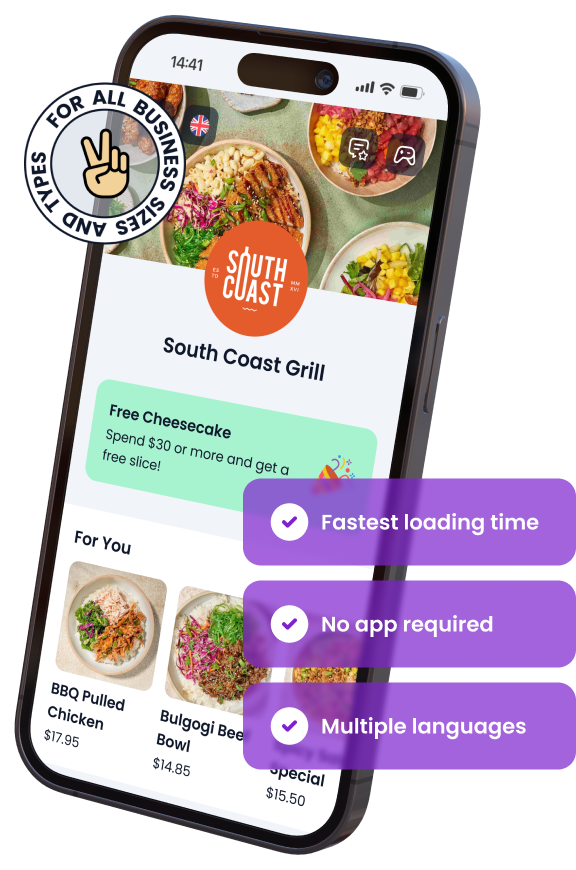
In This Article

Free AI Tools for Restaurants
TRY NOW ➜

Let your guests play to decide who pays
Add a fun twist to the dining experience with our built-in game—one tap reveals who gets the bill!


